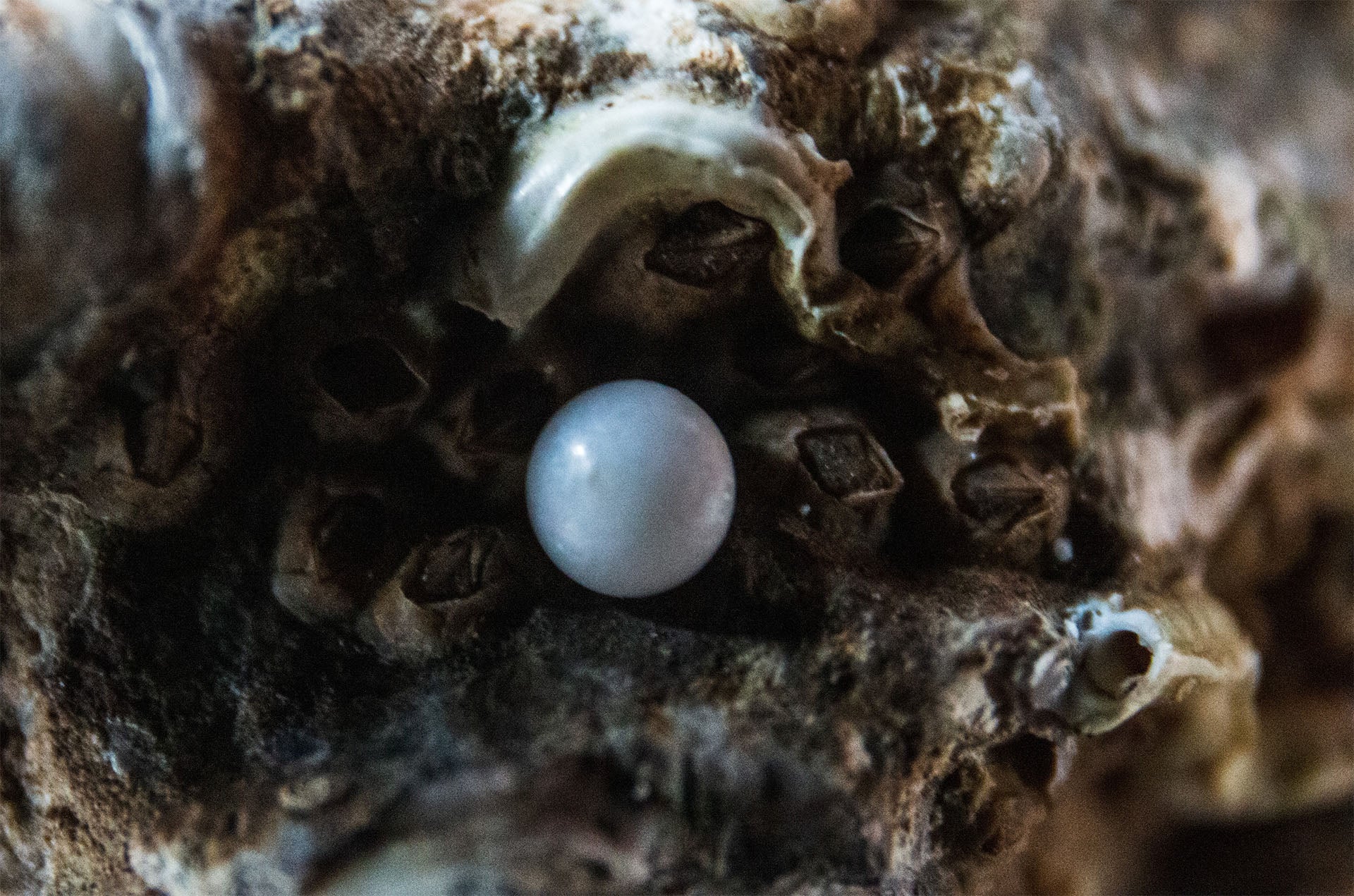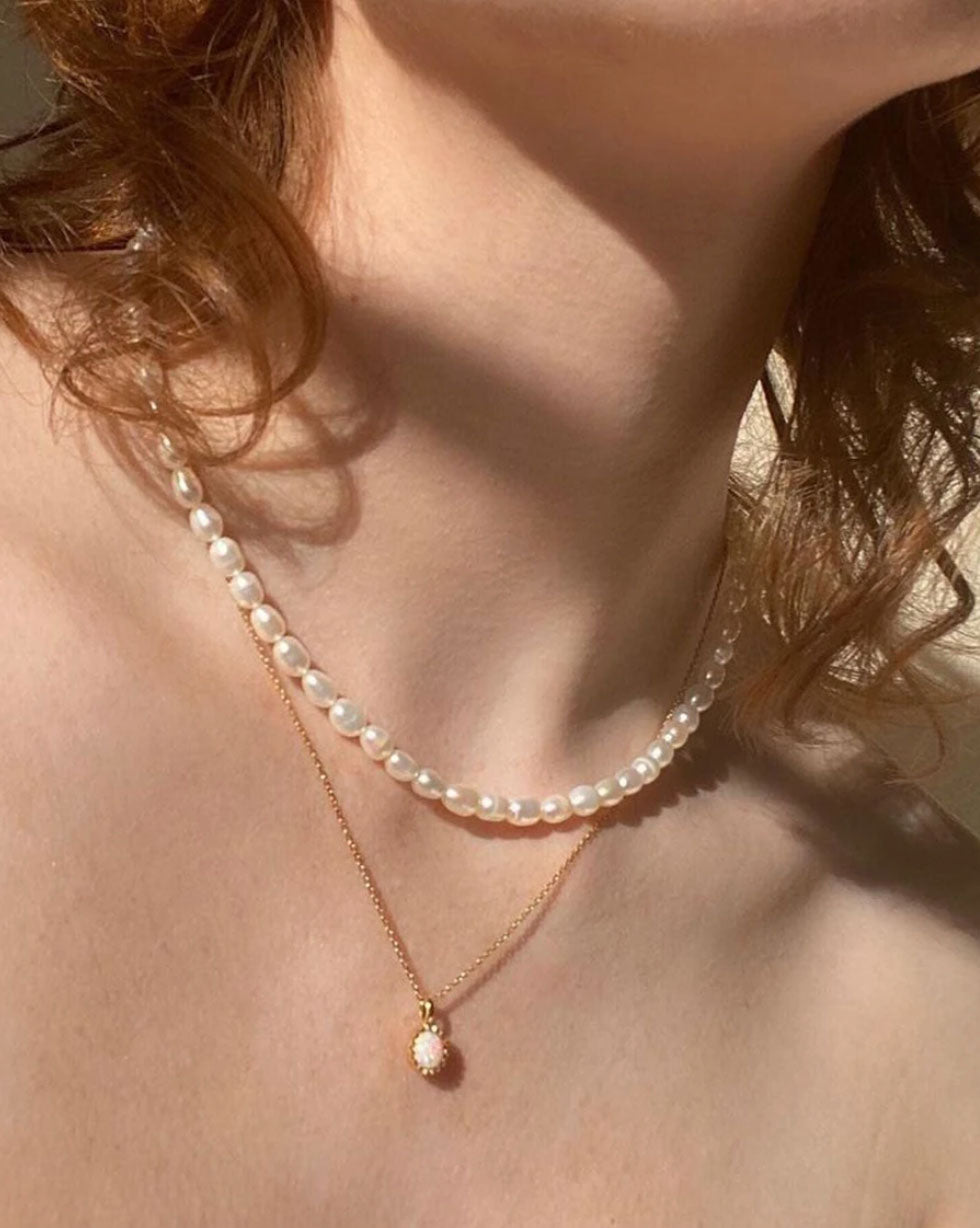LET'S TALK ABOUT PEARLS.
Let’s talk about pearls. Whether you own an heirloom pearl necklace or you’re after a gorgeous pair of freshwater pearl earrings, it’s important to know the ins and outs of what a pearl is all about. One of the key aspects of must-have pearl knowledge is understanding the difference between freshwater pearls and saltwater pearls.
If you’re already feeling lost (who knew that there were two types of pearls!) and looking for more info, we have you covered. Keep reading to learn more about the key differences and what to consider when shopping for pearls to add to your collection.
1. THE ORIGIN OF THE PEARL
First things first: it’s important to know that while freshwater pearls and saltwater pearls are sisters, they actually come from different origins. While both are sourced from mussels, saltwater pearls are produced in ocean-dwelling mussels, one at a time, while freshwater pearls are produced in freshwater mussels in batches of up to 30 at a time. Both can be found in the wild and cultured in dedicated pearl farms.
2. THE DURABILITY OF THE PEARL
Let’s talk about durability next. To understand how durable a pearl is, we need to first talk about how it’s formed. Both freshwater and saltwater pearls are formed the same way: an irritant enters the oyster or mollusk, and it reacts by coating the irritant in layers of ‘nacre,’ which then becomes the pearl. This process often takes months in freshwater pearls while it can take years in saltwater pearls.
Because the culturing process is much longer in a saltwater pearl, it often has thin, fine layers of nacre that create a better-quality pearl that can also be easily damaged. In contrast, freshwater pearls take much less time to produce and have a thicker nacre that is less prone to chipping or flaking. In other words, your freshwater pearl earrings are more likely to stay damage-free than your saltwater pearl earrings!


 Shop Now
Shop Now
3. THE SHAPE OF THE PEARL
Now that we’ve covered origins and durability, it’s time to talk about the shape. When looking at freshwater pearls, less than 5% are a perfect sphere. In fact, most freshwater pearls are unique shapes such as oval or baroque for a more modern feel. On the other hand, most saltwater pearls tend to have a classic spherical shape but can be found in more unique styles if you look hard enough.
4. THE COLOR OF THE PEARL
Next up on our list is color. Traditionally, saltwater pearls come in various shades of white, Tahitian Black or Golden South Sea Gold. On the other hand, freshwater pearls can be cultured to be a variety of colors, from classic white to feminine pinks to glamorous greys. Both pearls offer a lot of variety, but freshwater pearls do tend to have more contemporary color options available.



 Shop Now
Shop Now
5. THE PRICE OF EACH PEARL
The final major difference between freshwater and saltwater pearls is the ever-present subject of price. Because saltwater pearls are rarer than freshwater and the harvest time is much longer, their price is much higher than their freshwater sisters.
However, when it comes to considering the price of a pearl, freshwater pearls bring a better bang for the buck. Not only are they more durable than saltwater pearls, but they’re also available in a wider spectrum of colors and more unique shapes, too. All in all, a pair of freshwater pearl earrings may just be a better value for those on a restricted budget than their pricier saltwater sisters!





































